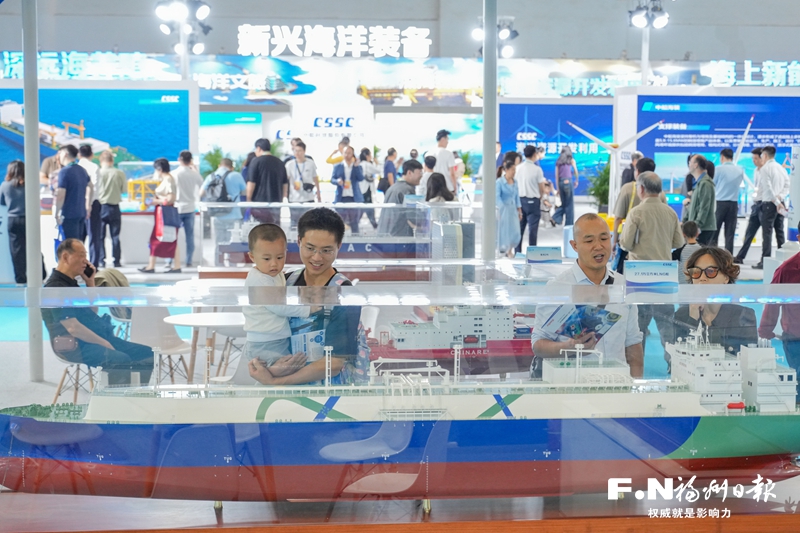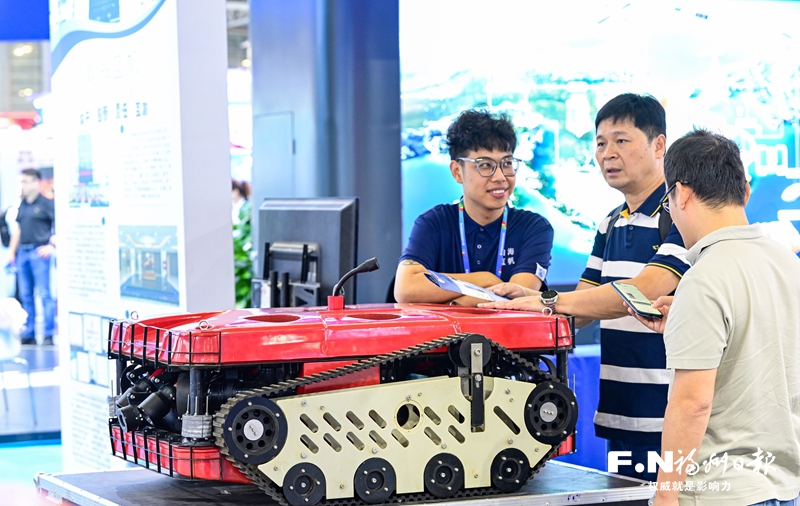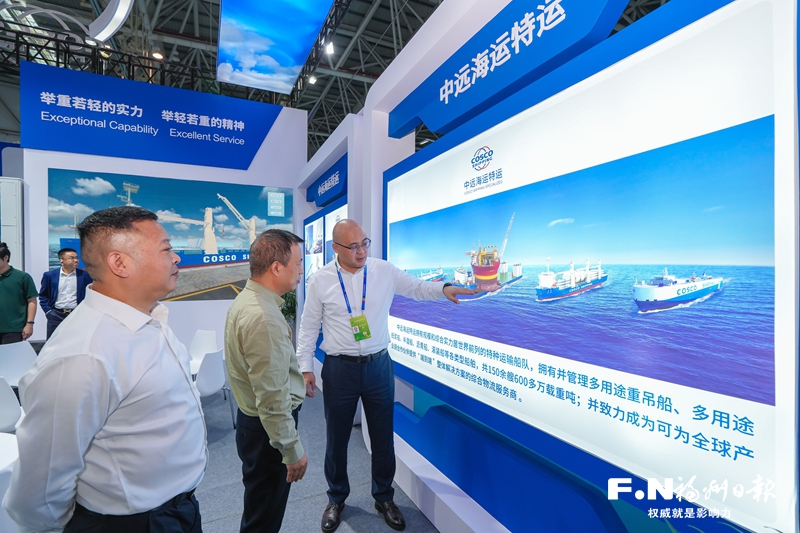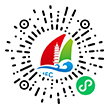Going global has become one of the hottest topics across China's industries, with new energy vehicles (NEVs) leading the charge.
As a vital carrier for international expansion, ships have always played a pivotal role. At the Second China Maritime Equipment Expo, what sparks will fly when “China’s vehicles” meet “China’s ships”?

Many citizens visited the Maritime Equipment Expo.Reporter: Bao Hua / Photography
China’s Automotive Vessels Accelerating Forward
“This is a 7,500-parking-space LNG dual-fuel roll-on/roll-off (Ro-Ro) ship, ‘Liaohekou,’ independently developed by China. It marks the official entry of China’s automotive ocean transport vessels into the ‘large ship era’ and the ‘new energy era,’” said Yuan Meng, a special transport expert at COSCO Shipping Special Transport, while introducing one of the company’s flagship products at the COSCO Shipping booth in Hall 1.
China’s domestically produced NEVs have gone global, and large automotive vessels play an essential role in this. As one of the earliest companies involved in automotive roll-on/roll-off transportation in China, COSCO Shipping has been a key player in the automotive logistics industry.
“Maritime transport is the preferred choice for exporting new energy vehicles, relying mainly on automotive vessels,” Yuan Meng explained. “In recent years, the market for automotive Ro-Ro vessels has been booming, with demand often outstripping supply.” Taking advantage of this opportunity, COSCO Shipping Special Transport has moved to the ‘large ship era,’ with vessels now reaching capacities of over 7,000 car spaces.
New energy is not only a highlight of the automotive industry but also provides new momentum for the development of shipping. Yuan Meng further elaborated, “‘Liaohekou’ is equipped with a single-propeller dual-fuel hybrid power system. It can run on LNG throughout its voyage, but can also use traditional fuel. This makes it environmentally friendly and flexible, with advanced green technologies that place it at the leading level domestically.”
At the same time, COSCO Shipping Special Transport and its joint venture, Guangzhou COSCO Shipping Automobile Transport Co., Ltd., are continuing to accelerate their efforts. Currently, an 8,600-parking-space automotive vessel is also being launched, with plans to have 30 automotive vessels and a total of 200,000 car spaces by the end of 2027.

Citizens were observing underwater robots for ship and dam cleaning & inspection. Reporter: Shi Meixiang / Photography
Competing on the Same Stage and Battling for Global Competitiveness
China’s recent surge in automobile exports has attracted attention from shipping companies worldwide.
At this year’s maritime equipment expo, Wallenius Wilhelmsen, the largest car shipping company globally, made an appearance. The booth staff informed reporters that due to the significant growth in China’s new energy vehicle exports, the demand for sea freight has risen internationally, and the company set a profit record last year.
Next to Wallenius Wilhelmsen, Norwegian Höegh Autoliners also made a strong presence. They showcased what is touted as the “world’s largest and most environmentally friendly” dual-fuel Ro-Ro car carrier in the core exhibition area. With a capacity of 9,100 car spaces, the ship drew widespread attention upon its debut.
Overseas shipping companies have long been formidable competitors. “The global car shipping market has long been dominated by large shipping companies from Norway, Japan, and South Korea,” explained Yuan Meng. In the past, there were only around 10 domestic car carriers engaged in international transport, which was insufficient to meet the rapidly growing market demand.
To address the gap in shipping capacity, not only car carriers but also container ships, pulp carriers, and others have been repurposed to play a role in car shipping. COSCO Shipping’s Special Transport Division innovated a foldable vehicle-specific frame to load cars into pulp carrier holds for ocean transport.
Currently, the company continues to collaborate with domestic design institutes to enhance the development of car carriers. “From a technical standpoint, large-scale transportation of new energy vehicles presents many challenges in terms of safety, economy, and other factors. We have been continuously investing in research and development. When the demand truly arrives, we will have a significant advantage and are poised to seize a leading position in the next round of development,” said Yuan Meng.

COSCO Shipping Specialized Carriers Booth. Reporter: Yuan Hao / Photography
Equipping “Chinese Ships” with “Chinese Parts”
A massive car carrier is made up of millions of components. The successful voyage of a car carrier relies on the seamless coordination of each part.
On land, vehicles rely on maps; at sea, ships depend on nautical charts. At the booth of COSCO Shipping (Guangzhou) Co., Ltd. in Hall 3, a reporter saw an Electronic Chart Display and Information System (ECDIS), which can connect to the Beidou Navigation System and is entirely domestically produced. It provides accurate and reliable navigation for vessels heading to sea.
“The HN-ECDIS100, from hardware to software, is independently researched, designed, and developed. It is fully autonomous and controllable. It has just received the China Classification Society type approval certificate and has been included in the advanced technology product recommendation directory by the Guangzhou Shipbuilding Industry Association,” said the responsible person at the booth.
To truly realize the goal of “Chinese vehicles on Chinese ships” venturing into the world, it is not only essential to have design and construction enterprises with independent research and development capabilities but also to firmly control the autonomy of the equipment.
Also expected to serve car carriers are transfer robots. These robots are designed for transferring and placing vehicles and are still in development. According to personnel from COSCO Shipping (Qingdao) Co., Ltd., during the summer, the temperature at the docks is high and the working conditions are tough. Using transfer robots to move cars not only frees up manual labor but also enhances efficiency, achieving full-process automation.
Faced with new strategic opportunities, Chinese shipbuilding companies are continuously exploring and striving to carve out new paths. In the future, the pace at which Chinese ships and Chinese vehicles set sail together will accelerate, heading toward the endless blue sea. (Reporters: Lan Yuping and Chen Junyi / Text, Bao Hua and Shi Meixiang and Yuan Hao / Photography)







